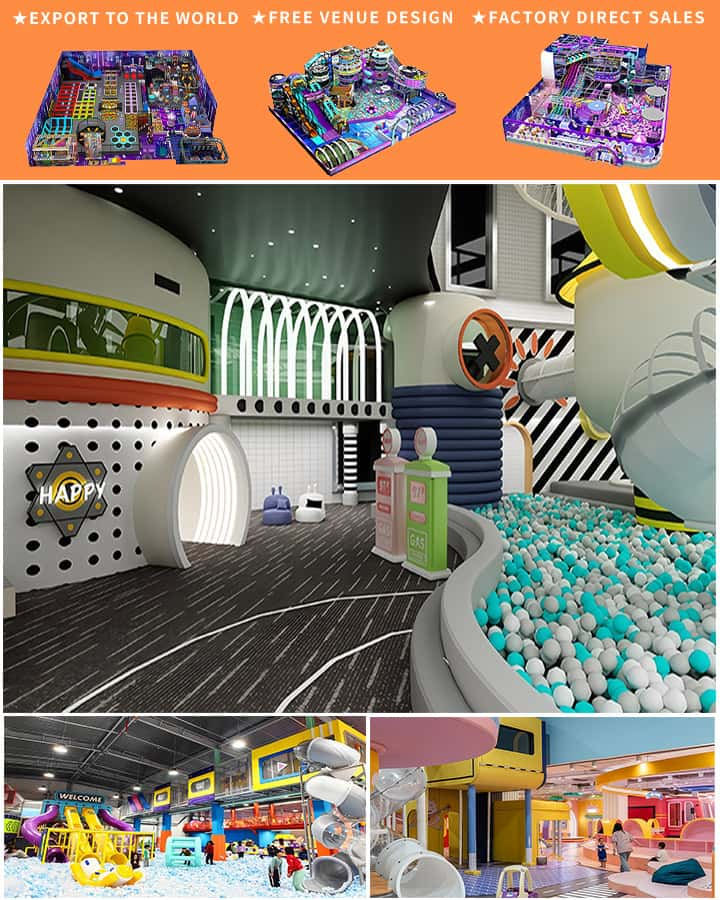Preschool years are a critical period in a child’s development, marked by rapid physical, cognitive, and social growth. One effective way to support this development is through the use of indoor playground equipment designed specifically for preschoolers. These play areas offer a multitude of benefits that contribute to holistic child development. Here’s an in-depth look at why indoor playground equipment is so beneficial for young children.
Physical Development
Indoor playground equipment plays a crucial role in enhancing the physical development of preschoolers. Activities such as climbing, sliding, and balancing help improve gross motor skills. For instance, climbing structures require children to coordinate their movements and engage their core muscles. Slides offer thrilling yet safe experiences that encourage muscle development and coordination. Balancing beams and other similar equipment help in fine-tuning motor skills, which are essential for writing, drawing, and other intricate tasks.
Additionally, these activities provide excellent opportunities for cardiovascular exercise, helping combat sedentary lifestyles that are increasingly common among young children today. By engaging in physical play, preschoolers not only stay fit but also build the foundational skills needed for more complex physical activities as they grow older.
Cognitive Development
 Cognitive development in preschoolers is significantly enhanced through interactive play. Indoor playground equipment often includes puzzles, shape sorters, and other problem-solving elements that stimulate cognitive skills. These toys encourage children to think critically, recognize patterns, and develop spatial awareness.
Cognitive development in preschoolers is significantly enhanced through interactive play. Indoor playground equipment often includes puzzles, shape sorters, and other problem-solving elements that stimulate cognitive skills. These toys encourage children to think critically, recognize patterns, and develop spatial awareness.
Moreover, navigating different pieces of playground equipment requires planning and decision-making. Children learn to assess risks, make choices, and understand cause-and-effect relationships. This kind of experiential learning is invaluable and complements traditional educational methods.
Social Development
The social benefits of indoor playground equipment cannot be overstated. Play is one of the primary ways through which preschoolers learn to interact with their peers. Shared activities on the playground teach children about cooperation, teamwork, and empathy. They learn to wait for their turn, share space, and resolve conflicts amicably.
Interactive playgrounds often feature collaborative equipment like seesaws or merry-go-rounds that require multiple children to operate. Such experiences foster camaraderie and help children develop strong social bonds. Moreover, playing alongside others helps improve communication skills and boost self-esteem as children gain confidence through positive interactions.
Emotional Development
Engaging in play on indoor playground equipment has profound effects on emotional well-being. Play allows children to express a wide range of emotions safely and constructively. They can experience joy, excitement, and even mild frustration, all under controlled and secure conditions. Learning to manage these emotions during play helps children develop emotional resilience.
Playgrounds also serve as environments where children can practice independence. Navigating through various challenges on the playground builds self-confidence and fosters a sense of accomplishment. These feelings are vital for developing a healthy self-image and emotional stability.
Safety Considerations
One significant advantage of indoor playground equipment is the controlled environment it offers. Indoor settings are free from weather-related hazards, such as extreme temperatures or inclement weather. Additionally, indoor play areas are typically designed with safety in mind, featuring soft flooring materials, padded surfaces, and secure barriers to prevent accidents. This ensures that children can explore and play freely without constant supervision, giving caregivers peace of mind.
Conclusion
Indoor playground equipment offers numerous benefits that extend far beyond simple amusement. It supports physical, cognitive, social, and emotional development, making it an essential component of early childhood education and care. As parents and educators seek the best environments for nurturing young minds and bodies, indoor playgrounds stand out as highly effective tools. Investing in quality indoor playground equipment is a worthwhile endeavor that pays dividends in the form of healthier, happier, and more well-rounded preschoolers.




